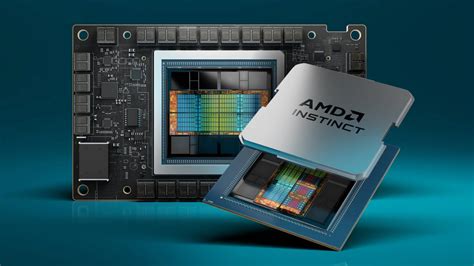The year 2024 has ignited an intensifying rivalry in the AI accelerator market, where AMD’s latest move to showcase their MI300x GPUs with GEMM (General Matrix Multiply) tuning is generating buzz and raising eyebrows. In a sector where Nvidia has long reigned supreme, with its CUDA architecture deeply embedded in the roots of various AI frameworks and applications, AMD’s latest performance metrics suggest they might finally be mounting a serious challenge. By optimizing the GEMM operations, AMD claims that their new hardware can improve throughput and latency by an eye-popping 7.2x. These advancements may eventually force the industry to reconsider the longstanding dominance of Nvidia. But how valid are these claims, and what does this mean for the broader adoption of AMD GPUs in the AI sphere?
To assess the validity and impact of AMD’s advancements, let’s start by dissecting the technological features. The MI300x GPUs, loaded with 192GB of HBM (High Bandwidth Memory), leverage GEMM tuning to streamline complex mathematical operations such as matrix multiplications, which are core components in many AI and machine learning models. The hardware optimizations promise significant performance gains, especially in the execution of LLMs (Large Language Models) like Llama-2 70B — which are computationally demanding. According to the benchmark results, the optimized MI300x showed throughput and latency figures that, in theory, outperform Nvidia’s H100, further stirring the competitive pot.
However, not everyone is sold on these metrics. As several users pointed out in public forums and comments, the optimal performance in controlled benchmarks does not always translate to real-world dominance. Benchmarks can sometimes be tailored or configured to highlight strengths selectively while glossing over critical weaknesses. Indeed, the conversation around TensorRT — Nvidia’s platform-specific library for inference — suggests that while alternative libraries like vLLM serve as viable options, they might not yet match Nvidia’s proven efficiency. vLLM, used in the benchmarks of AMD’s claims, is lauded for its ease of setup but has been critiqued for not maintaining comparable performance in production environments where real-world applications often involve highly variable load and idiosyncratic performance demands.
Another point of contention is the power and cost dynamics. Nvidia has long relied on its CUDA moat, making the transition to rival architectures more than just a simple ‘spec’ game. CUDA’s deep integration into popular AI frameworks means, for many, the switch to an alternative like AMD involves significant engineering resources, costs, and time. In a way, it’s not just about hardware specs but the extensive software ecosystem that accompanies it. Big AI players, often making investments in the tens of millions for their infrastructure, weigh these factors heavily. Couple this with AMD’s seemingly sporadic history in driver support and you have a nuanced set of challenges that goes beyond simple hardware horsepower.
Discussing these points without addressing the elephant in the room — scalability — would be incomplete. Nvidia has made strategic acquisitions, like Mellanox, to bolster their data center capabilities. The InfiniBand technology they acquired offers a high rate of data throughput, enabling low latency and efficient communication between GPUs. AMD’s recent acquisition of Xilinx could offer some competition here, thanks to high-speed interconnects that might level the playing field. Yet, Nvidia’s existing deep integration of such technologies might still offer them a significant, if not insurmountable advantage, especially in data-heavy operations typical of AI workloads.
Even with these considerations, AMD’s MI300x does indeed offer an enticing proposition. For organizations willing to put in the engineering hours to transition away from Nvidia’s hardware, the reported improvements could translate into significant cost and energy savings over time. A notable aspect of the discourse is about theoretical works like ThunderKittens and other libraries aiming to support different architectures more seamlessly, making the software ecosystem more robust across multiple vendors. Essentially, if AMD can consistently offer hardware that’s not only competitive but also supplemented by a ‘close-enough’ software ecosystem, they might chip away at Nvidia’s near-monopoly in AI acceleration.
In conclusion, the technical battlefield is far from settled. Nvidia’s depth of experience with sophisticated chip designs, multi-die architectures, and their robust portfolio of proprietary libraries provide them a substantial head start. Meanwhile, AMD’s open-source initiatives and recent performance claims inject a dose of healthy competition that could spur innovations beneficial to the industry as a whole, particularly those with constrained budgets or less tolerance for higher power consumption. Future developments and head-to-head competitive analyses in diverse, real-world applications will clarify whether AMD’s MI300x GPUs can be the David to Nvidia’s Goliath, potentially reshaping the landscape of AI hardware.
For developers and businesses pondering an investment in new GPU technologies, the prospect of AMD versus Nvidia is an evolving story. The stakes are high, the numbers compelling, and yet the complexities immense. As we keep an eye on the benchmarks and evolving narratives, one thing is clear: competition is a boon for technological progress, and the unfolding GPU wars promise to bring about leaps in innovation that could benefit us all.


Leave a Reply